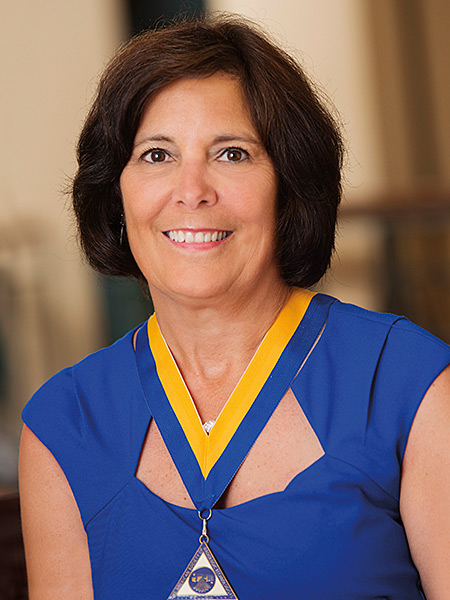Jul. 5, 2016
 Research in the medical imaging and radiation therapy profession came a long way in the nine years I served on the ASRT Foundation Research and Grants Advisory Panel, and as I step down as chairman this fall, my hope is that the Panel will continue to encourage and improve research in the medical imaging and radiation therapy profession by providing guidance to those interested in conducting research.
Research in the medical imaging and radiation therapy profession came a long way in the nine years I served on the ASRT Foundation Research and Grants Advisory Panel, and as I step down as chairman this fall, my hope is that the Panel will continue to encourage and improve research in the medical imaging and radiation therapy profession by providing guidance to those interested in conducting research.
Serving on the Panel was a great privilege for me, primarily because I have been involved in research for many years. I gained the majority of my research experience as a faculty member at The Ohio State University. Some research projects I conducted independently, while others involved colleagues, or were performed in collaboration with undergraduate honors students and graduate students.
One of my favorite roles as a faculty member was to share my passion for research with radiologic science professionals and students and see them conduct and publish their own research. Working closely with both experienced and novice researchers allowed me to see the issues they struggled with, specifically in the area of applying for and securing funding.
Serving on the Panel has given me the opportunity to address some of the struggles facing researchers and make changes to the application process to help researchers develop stronger research projects. These changes have helped them investigate questions that are more relevant to medical imaging and radiation therapy and also helped them obtain the funds necessary to complete their investigation. Continuing research in the profession is important to me and to our community.
Process Improvements
One of the first improvements the Panel made was to implement a checklist review system for evaluating grant applications. The new system enables each member of the Panel to review each project objectively based on the same criteria. This improved process has led to a more consistent evaluation of applications and enhanced the quality of applications received.
In the application process we also identified that there was not a process to develop comprehensive feedback and recommendations to deliver to applicants on how to improve their project, making it difficult for them to strengthen their research plans. To address this challenge, we instituted a webinar for the Panel to discuss each application as a group.
These two changes alone greatly improved the evaluation process, enabling each project to be seen from various perspectives and enabling the Panel members to provide specific recommendations to the researcher on how to improve their project.
Communicating the Process
With the backend systems greatly improved, we focused next on improving and better communicating the application process. The first step was to update the research grant applications brochure. The second was to implement a “Letter of Intent” process that would help researchers craft the best proposal possible.
The Letter of Intent, which explains what the project is and what it will accomplish, is due well in advance of the due date for the final grant proposal. These letters give the chairman and the vice chairman of the Panel an opportunity to offer assistance and suggestions that will strengthen the final proposal. This step not only has helped novice researchers refine their proposals, but also has connected them with experienced researchers who act as mentors.
The various changes the Panel made have helped strengthen the research projects submitted for funding and have helped improve the quality of research supported by Foundation donors. Although the final decision for funding rests with the Foundation board of trustees, Panel recommendations heavily influence the board’s decision.
Continuing Efforts
We have made great strides in improving the research being done in the profession, but more can be done to strengthen the research and empower R.T.s to lead it. I would like to see the Foundation become a network for collaborative studies across multiple facilities, especially as more grant recipients publish their findings and share their knowledge with their colleagues. This would further strengthen the quality of research within our profession.
Donor support has made the Foundation a wonderful resource that is helping to ensure funding is available for R.T.-specific research. Researchers — from novice researchers needing funding for thesis and dissertation research to advanced professionals conducting independent research — should treat the Foundation as their go-to place to network and to apply for funding. And we, as medical imaging and radiation therapy professionals, need to do all we can to make sure their generous gifts move the profession forward for the next generation of R.T.s.
Apply for a Grant
If you’re interested in conducting research, or if you have a research project in mind, begin the process by submitting a letter of intent — by June 27 for fall grants, or January 25 for spring grants. To get started, visit the research grants page and read the great information the Foundation has compiled to help you begin the process of submitting your application.